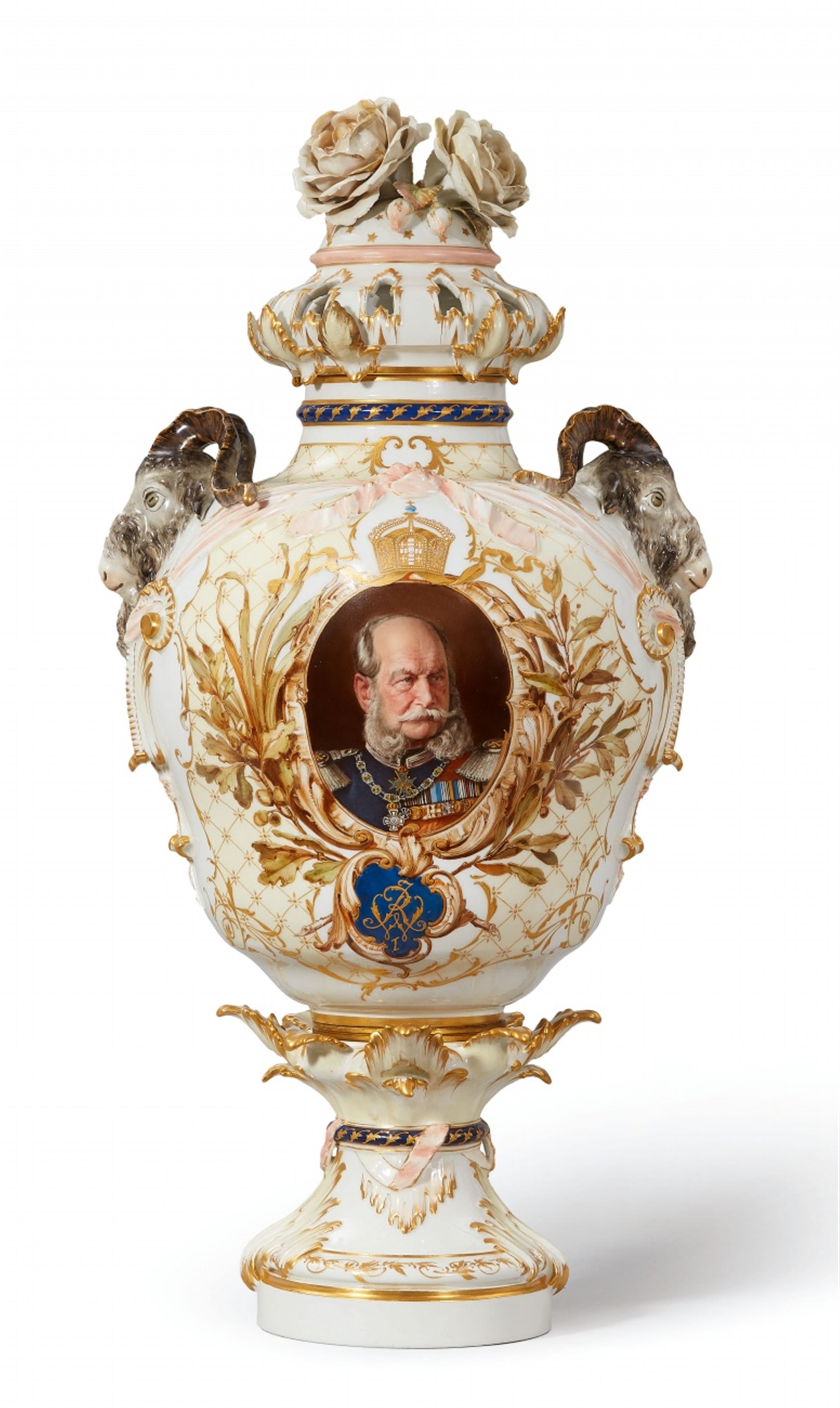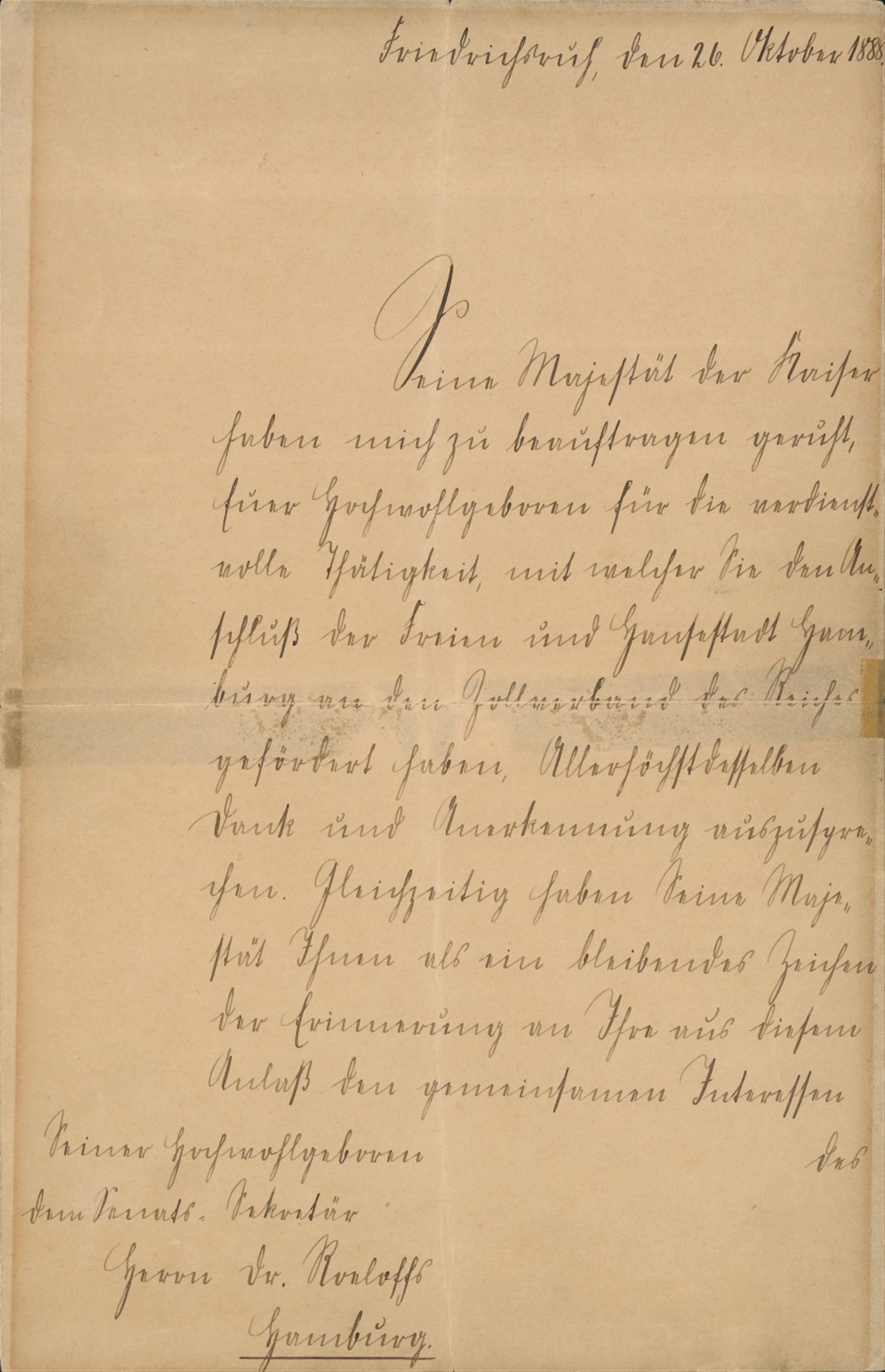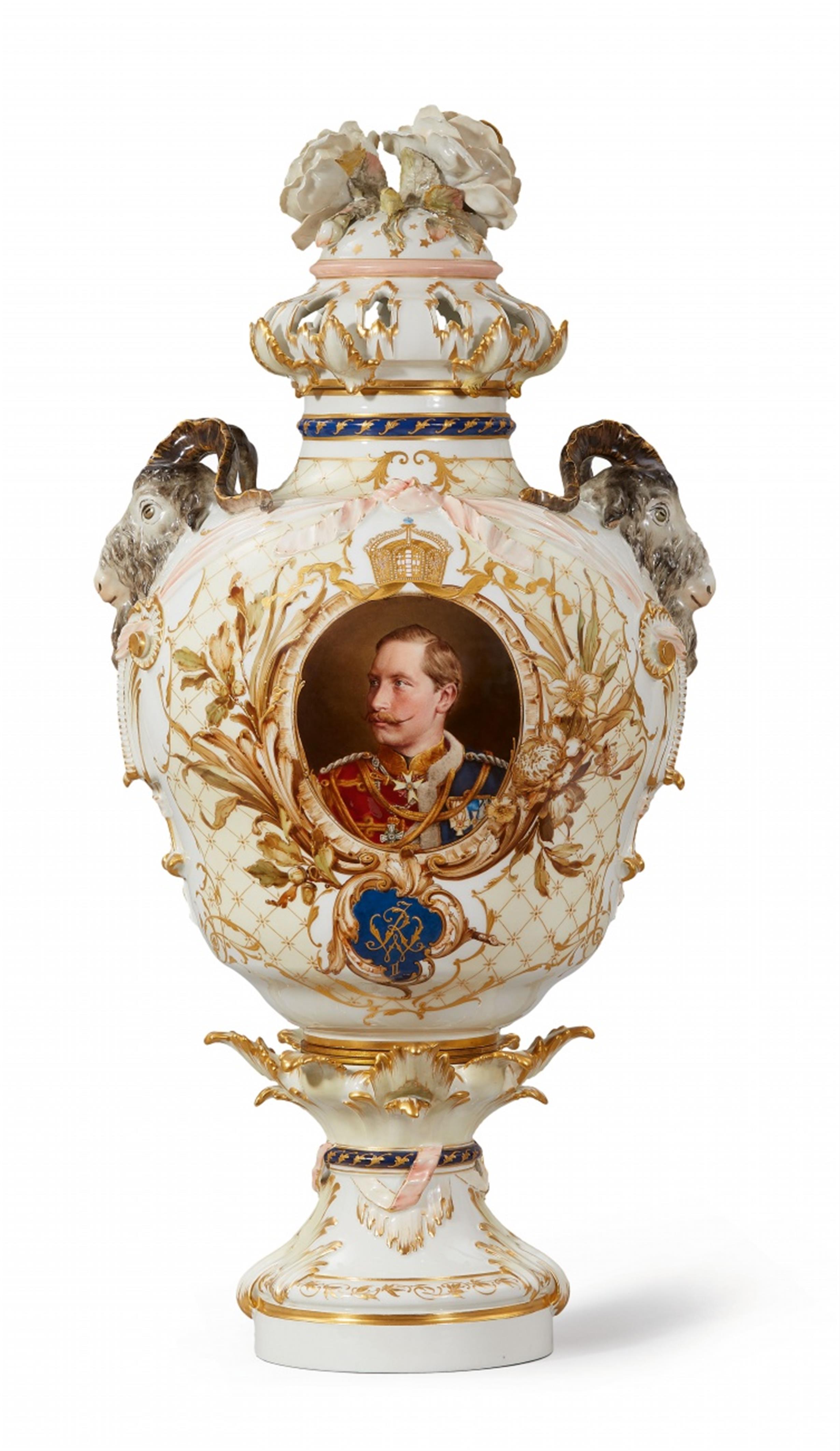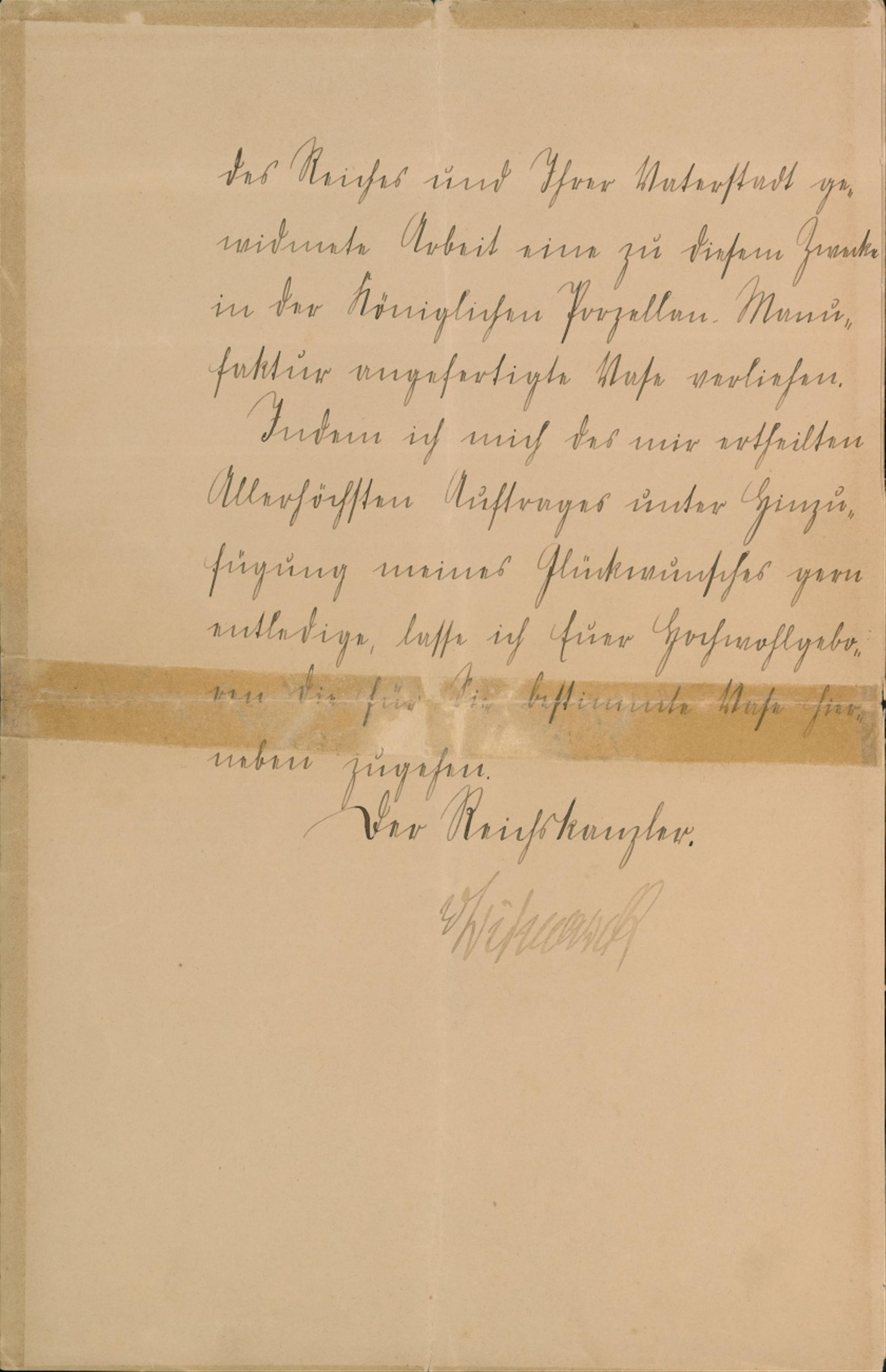A magnificent Berlin KPM porcelain vase with portraits of two emperors
Model no. 307, potpourri vase with lid. Fired in two parts and subsequently attached, the original lid with rose appliques, two naturalistically painted ram's head handles. Decorated with two oval rocaille frames entwined with laurel, reeds, oak, and flowering sprigs surrounding portraits of Wilhelm I and Wilhelm II beneath German imperial crowns, inscribed below with gold relief monograms. Blue sceptre mark with underglaze blue K above, red imperial orb mark, impressed marks 4, I., and M. With minor older restorations over chips to the flowerheads. H 65.5 cm.
1888.
This vase can be precisely dated due to the inclusion of a letter by Otto von Bismarck stating that he commissioned the work on behalf of Emperor Wilhelm II on 26th October 1888. In his letter, the Imperial Chancellor thanks the Hamburg secretary of the Senate Dr. Roelofh for his efforts in integrating the Hanse city into the customs union. He commissioned the vase as a "lasting symbol of remembrance".
Nostalgia and progress
The proclamation of the German Empire in Versaille's historic Hall of Mirrors in 1871 marked the zenith of an era of historicism and nostalgia in both architecture and the fine and decorative arts. The architectural remodelling of imperial Berlin was inspired by the changes to Napoleonic-era Paris instigated by the architect and prefect Georges-Eugène Haussmann. Now the Renaissance, Rococo and Baroque forms used by Gottfried Semper during the renovation of Vienna under Joseph I were also to follow in the footsteps of the austere formal repertoire of Karl Friedrich Schinkel and his contemporaries in Berlin.
An especially characteristic example of this era is the highly decorative Renaissance style pitcher-form vase in a foliate majolica design inspired by Italian models. Made entirely in biscuit porcelain, the opulent vase bears a portrait of Empress Augusta, wife of Wilhelm I (lot 329). Despite the Imperial Porcelain Manufactory KPM's firm standing in the international market, solidified by their repeated participation in world fairs as of 1851, an increasing sense of competition began to develop between the international porcelain manufactories with regard to new techniques and designs.
Spurred on by the criticism of the so-called “Berlin Protokoll” of 1878, a commission enlisted by the Prussian house of representatives to assess KPM in light of the increasing competitive pressure caused by the comparison provided by international world fairs, the firm's designers determined to free themselves from the previous constraints of Historicism in order to discover new impetus and novel décor.
The introduction of the chemical and technical laboratory in the same year by the chemist Dr. Hermann Seger allowed KPM the opportunity to systematically experiment with new ceramic techniques, which resulted in a series of luminous, modern crystalline glazes used on a new porcelain mass known as Seger Porcelain. As a soft-paste porcelain, this new mixture had a significantly lower firing point which allowed for new possibilities in the décor, especially in the use of underglaze pigments, which had posed serious technical challenges since the beginnings of European porcelain manufacturing in the 18th century.
Many new decorative glazes were developed inspired by Asian ceramics: The sumptuous ox-blood red known as sang de boeuf, polychrome graduated copper oxide glazes with craquelure effects, and shimmering crystal glazes. Due to their higher percentages of metal oxide pigments, crystal glazes have a slower cooling time. This slower cooling causes unpredictable decorative effects within its surface (lots 362 - 368) and provides an infinite number of unique designs that betray little of their industrial production. However, it was still impossible to imagine completely abandoning the old but well-loved models of the Rococo and Neoclassical periods (lots 331, 341, 348), as the Emperor's taste was influential and conservative.
Under the leadership of the porcelain painter Alexander Kips, the manufactory did develop a new style of painting inspired by their renowned tradition of floral designs. The older type of floral décor is listed in KPM's commission records as “flower painting in the old style”, “fine old style flowers”, or “fine old style floral bouquets”, whereas the newer type is listed as “new Berlin flower painting”. Since the late 20th century, this style has generally been known as “soft painting” (German: weichmalerei), and an excellent example of it can be found on the chandelier in lot 333.
This last chapter illustrates the rich variety of forms and décor produced by a manufactory that found itself at a crossroads on the path towards a new, unified style of design, but ultimately, political and scientific changes and progress did not yet allow for the unity they sought.
Provenance
In Rhenish family ownership since 1972.
Literature
For this model, cf.: Ponert, Berlin 1985, no. 134. A similar vase with a portrait of Wilhelm II in: Köllmann/Jarchow, Bildband, Munich 1987, no. 566.
Exhibitions
100 Jahre Kaiser-Friedrich-Halle im Museum Schloss Rheydt, Mönchengladbach, October 2003 - February 2004.








